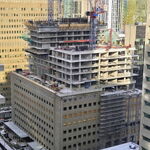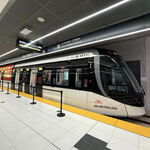if the BCA and EA showed that the ridership wasn't there and that it would cost $30 billion instead of $3 billion, sure, they may cancel it. But they seemed pretty solid on building it if the detailed numbers didn't go way out of whack compared to the preliminary numbers.
Funding is supposed to come out of the transit infrastructure fund, and that thing isn't disappearing any time soon.
When the EA process starts I think rural Ontario will have the following questions to Queens Park:
1. Will the EA look at protecting plants and animals? There are deer, coyotes and bears (yes, even in SW Ontario) that need large tracks of land and will these tracks hinder their movement? How about protecting rivers and wetlands which have endangered fish/eels/mussels in them? How about tracks of forest (animals need interiors of forests which only start about 50 ft from the edge. If the railway goes in the middle of a forest it cuts out a swath of 100 ft of interior space)
2. Will Queens Park be as senstiive about expropriation as they are in Toronto? These are bigger plots of land but still someone's property and homes. In Toronto they will bore a tunnel (vs buy up houses and then cut and cover) which is far more costly (and even more so if you factor in the potential for the resale of the land).
3. Will Queens Park ensure that neighbours are not cut off from each other and build bridges over the tracks? And will they pay for the maintenance?
Basically, will there be a real EA or will it be Queens Park shoving it down the throats of rural Ontario (vs catering to NIMBY's in Toronto)?
What would Toronto have done if Queens Park would have expropriated all the lots north of Eglington from Allen to Black Creek and then did cut and cover? It would save a lot of money (net of condo resales) and increased density along an avenue. We would be up in arms and it would have taken years and plenty of legal challanges.
Why does the same thing not apply to rural Ontario? There will be lots of legal challanges and it may take 10+ years before a shovel hits the ground.
To avoid this time and cost I still beleive that creating HSR via Burlington/Brantford/Woodstock (and a seperate HSR line to Kitchener) will be a far cheaper alternative and will serve more people with no additional time to get from London to Toronto.





